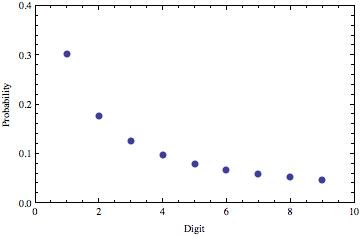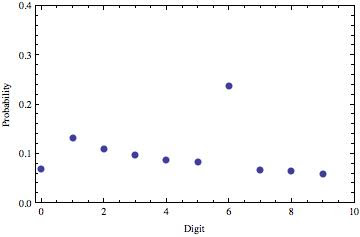So, welcome to the first installment of Lost in Transcription’s newest feature: The Genetical Book Review. For the maiden voyage, we’ll cover the 2002, Pulitzer-prize-winning Middlesex by Jeffrey Eugenides.
You’re surprised? Because you assume that an eight-year-old Pulitzer winner must already have been reviewed?
Fair enough. But, here’s the gimmick: we’ll use the genetics angle to talk about some things that have not already been covered extensively elsewhere.
First, though, the precis and value judgement. If you’ve not read the book, or read about it, it follows three generations of the Greek-American Stephanides family, who traipse through a slice of historical events in Smyrna and Detroit over the course of nearly a century. It’s sort of a Forrest Gump for the NPR set. Cal Stephanides and his relatives witness genocide at the hands of the Turks, emigrate to America, build cars for Henry Ford, and run booze during prohibition. They are present for the founding of the Nation of Islam and the 1967 Detroit race riots. They flee to the suburbs and watch Watergate unfold on the television.
As in Forrest Gump, some of the historical context feels a bit like pandering, an attempt to draw the reader in through nostalgia. On the other hand, many of the events are local enough to be only passingly familiar to most readers, so there’s learning to be had. More importantly, those events are always portrayed through the lens of how they shaped the trajectories of the characters in the book. And, they are charmingly and engagingly written, with a varied style that is pleasurable to read.
Basically, if your book group has not already read this book, and you’re sick of plodding stories about alcoholic mothers and victims of sexual abuse, but want something with some literary gravitas (so that you don’t lose social status by suggesting it to your book-group frenemies), this is the book for you!
There you have it. Hit the jump for the role of genetics in the book.
The book is written in a memoir style, told by Cal, who periodically takes on the persona of a chromosome being passed down, or an egg sitting in an ovary as s/he relates the events from previous generations. I say “s/he” because – and I’m not giving anything away here – the key twist to the coming-of-age story is that Cal is intersex, having ambiguous genitals as a result of a recessive, genetic 5-alpha-reductase deficiency. For reasons reaching back to Smyrna, Cal’s condition is not identified at birth, and our protagonist is raised as a female, Calliope. It is not until puberty hits that Calliope discovers her condition and transforms into her male alter ego, Cal.
The 5-alpha-reductase gene encodes an enzyme that converts testosterone into dihydrotestosterone (DHT). In early development, testosterone is responsible for certain internal male reproductive structures, such as the vas deferens, while DHT is responsible for the external genitalia. Upon the onset of puberty, testosterone drives the male increase in muscle mass and deepening of voice, while DHT is responsible for the growth of facial hair. One of the reasons for the female-to-male switch that happens at puberty is that there are actually two different 5-alpha reductases. The type 2 enzyme is the one that is primarily responsible for DHT production, particularly in early development, and it is this enzyme that Cal lacks. The other one, the type 1 enzyme, is substantially upregulated at puberty, which results in an uptick in DHT production.
So, there are two things that combine at puberty to drive the sudden appearance of male characteristics: (1) Testosterone and DHT start sharing the load for creating external male-typical characteristics, and (2) a second pathway appears for the generation of DHT.
I have to say, as I have read about this disorder, I have been impressed with the depth of understanding that Eugenides seems to have brought to the novel.
[As a side note, this disorder was first identified in the remote village of Salinas in the Dominican Republic, where it occurred in about 2% of live births. Locally, these individuals are known as “guevedoces.” Whenever I have seen reference to the guevedoces, it is followed by the phrase “literally ‘penis at twelve.'” Actually, it turns out that ‘gueve’ is derived from ‘huevos,’ which is slang for ‘balls.’ Thus, a better translation might be “balls at twelve.” Although, if you’re going to precede your translation with “literally,” you would need to acknowledge that this slang for ‘balls’ is literally the word for ‘eggs.’ Of course, referring to the appearance of male sexual characteristics at the onset of puberty as “eggs at twelve” is just weird and confusing, because it sounds like something you would order at Denny’s, and because it is sort of the exact opposite of what is going on.]
Incest is one of the recurring themes in the book, which traces the paths through which Cal came to inherit two defective copies of the 5-alpha-reductase gene. This particular disorder is straight-up recessive, so if you have one functional copy of the gene, you develop normally.
Cal’s grandparents on his/her father’s side are brother and sister. They hailed from the same tiny village outside of Smyrna, were orphaned, and fell in love. Their immigration to America permitted them the opportunity to fabricate a non-consanguinous past. The interesting thing is that the inbreeding involving Cal’s grandparents bears absolutely no responsibility for Cal’s condition. Their son, Milt is unaffected, which means that he inherited one defective gene copy from one of his parents. It doesn’t actually matter whether the other parent carried a copy or not.
More specifically, what is required for the story is that Milt be a carrier, but not express the condition. If one of his parents is a carrier, the probability that he is a non-expressing carrier is 1/2. If both of his parents are carriers, the probability that he is a non-expressing carrier is 1/2. It will not have escaped your attention that 1/2 = 1/2.
There is a second case of inbreeding, however, that does contribute to Cal’s condition. Milt and his wife, Tessie, are second cousins, and each of them is heterozygous for the deficiency. Now, statistically speaking, the fact that Milt and Tessie are second cousins barely counts as incest. For a rare disorder such as 5-alpha-reductase deficiency, the elevation in risk due to a second-cousin marriage is small. How small? Let’s see.
Assume that the frequency of the defective version of the gene is q = 0.001, or one in a thousand. This is in the ballpark of what we might expect for a recessive mutation maintained at mutation-selection balance. The probability that an outbred individual inherits two defective copies is approximately q2, or one in a million. What if the mother and father are related? If their degree of relatedness is r, then the probability that their child will inherit two copies is:
p = q (r/2 + q (1 – r/2))
What is this r thing? Well, if they are brother and sister, r = 1/2, so the probability p would be about 0.00025. For first cousins, r = 1/8, and p = 0.0000634. For second cousins, r = 1/32, and p = 0.0000166.
That is, for second cousins, the probability goes from one in a million to about one in 60,000. Basically, you will have a bigger impact by taking prenatal vitamins.
Diane Paul and Hamish Spencer published an interesting piece a couple of years ago about the history of the stigmatization of first-cousin marriage, particularly in the United States. They make a number of interesting points, and I recommend the article, which can be found here. It is short, fascinating, open access, and requires no background in genetics to follow.
One of the points they make is that there is pretty much no way to interpret a ban on first-cousin marriage as anything other than eugenics. And yet, somehow, this prohibition has managed to escape that label. Another of their points is that the genetic risks associated with first-cousin marriage are actually small compared with a lot of behaviors that are completely acceptable in our society, such as women having children over the age of 40, or the use of in vitro fertilization techniques. (That second one was not mentioned by them, but it’s true.) So, there is some inconsistency there, which they trace to nineteenth century misconceptions about heredity and prejudice against immigrants and the rural poor.
But, back to the book.
To recap, in terms of causal things leading to Cal’s genetic composition, the fact that his/her parents are second cousins matters. The fact that the grandparents are brother and sister does not. Why, then, does the story, much of which is driving towards Cal’s conception, spend so much more attention on the (genetically) irrelevant grandparental love story?
Obviously, I can’t speak to the author’s intention, but to me, having two separate incidents provides a nice, clean separation between the psychological and genetic consequences of incest. Cal’s grandmother is wracked with guilt about her transgression, and this guilt drives the story in several places. In fact, one of the motifs in the book is that action (or, often, lack of action) is often motivated by superstitious beliefs. –– Sorry about the vagueness here. I’m in spoiler-avoidance mode. –– Hypothetically speaking, let’s say one of the characters is eating toast, and then that character’s mother falls down and breaks her hip. The character would blame him/herself for eating toast and refuse to eat toast again for a long time. You get the idea.
Anyway, my point is that by having two separate incests, we are able to distinguish more clearly between the genetic consequences of consanguinity from the EWWWW consequences of knocking boots with your sister.
Paul, D., & Spencer, H. (2008). “It’s Ok, We’re Not Cousins by Blood”: The Cousin Marriage Controversy in Historical Perspective PLoS Biology, 6 (12) DOI: 10.1371/journal.pbio.0060320
Buy it now!!
What’s that? You say you want to buy this book? And you want to support Lost in Transcription at the same time? Well, for you, sir and/or madam, I present these links.
Buy Middlesex now through:
Amazon
Barnes and Noble
indiebound
Alibris




